They lie at the foot of the Cairngorms, in the middle of a fertile landscape. And they were huge: the two Iron Age fortresses called Brown and White Caterthuns. A visit.
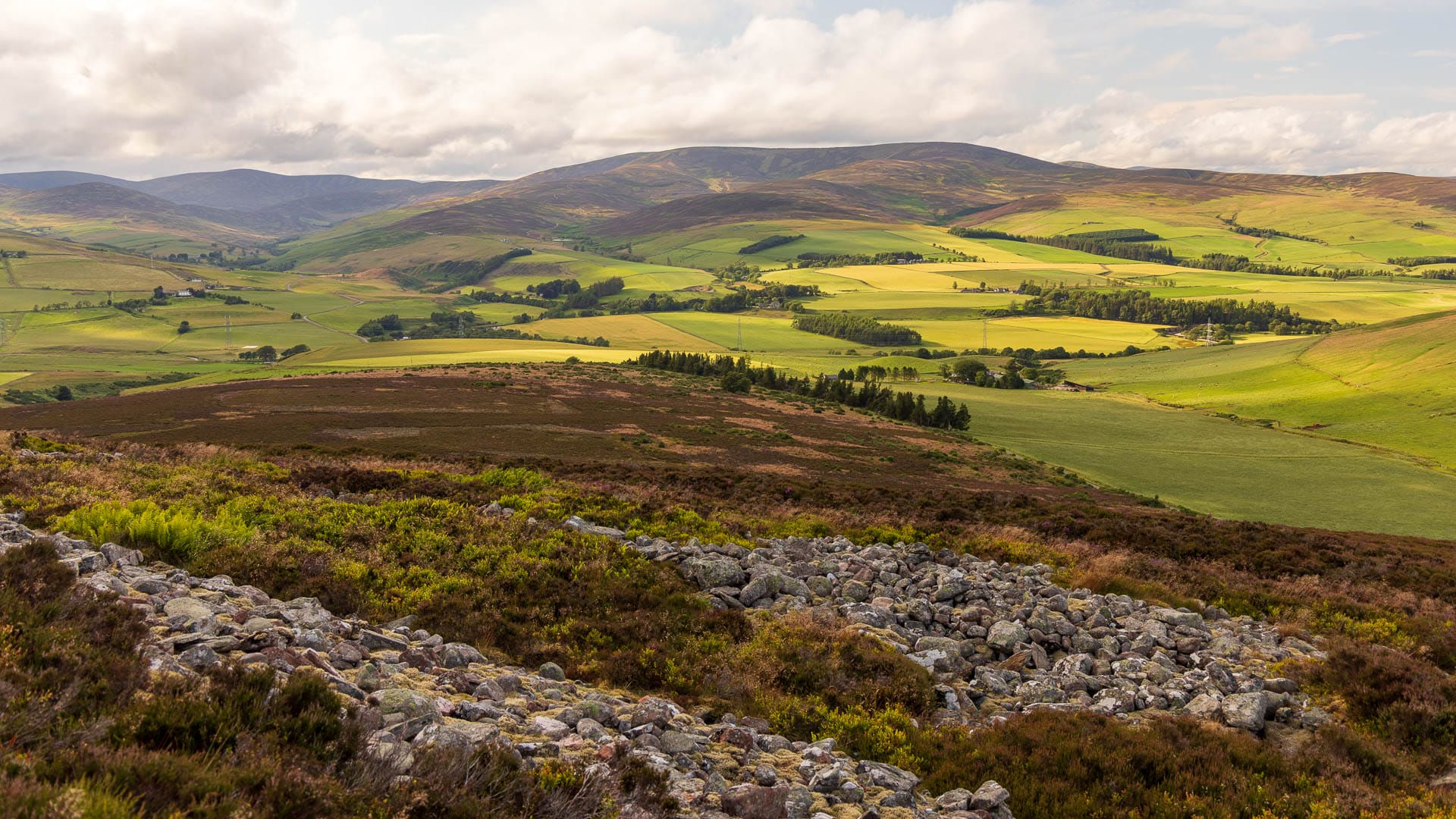
Admittedly: The caterthuns need a bit of imagination for visitors to understand why these structures deserve so much attention. Both structures are now just patterns on the ground, best recognised from the air.
And yet it is worth stopping here. Because the view over the landscape from the caterthuns alone is uniquely beautiful.
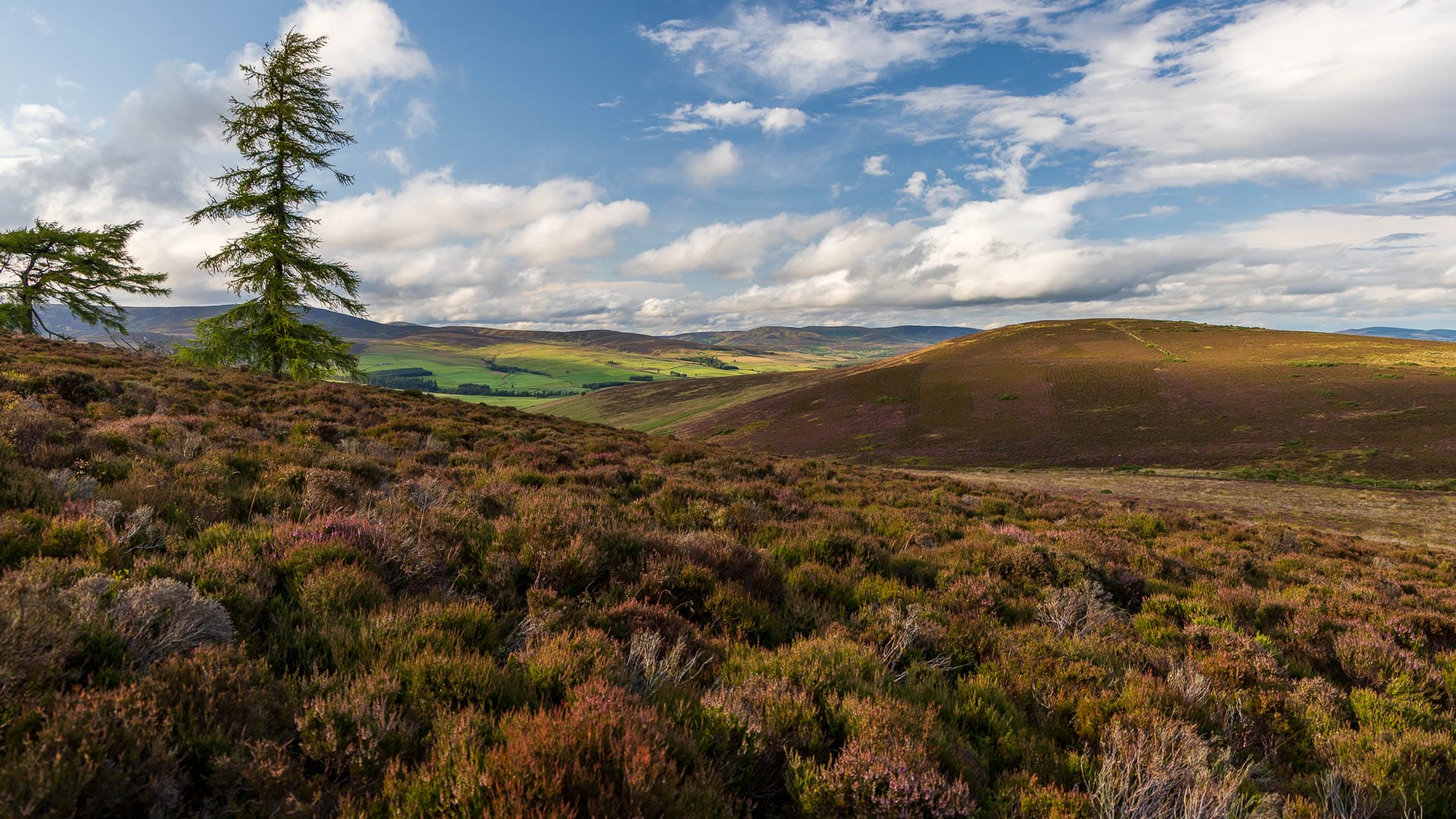
The hillforts were built in the first millennium BC, roughly at the beginning of the Iron Age in Scotland. The Brown Caterthun consisted only of earth walls and palisades.
The White Caterthuns, on the other hand, were even more impressive. It had massive and high walls made of stone, which were probably extended at the top by wooden palisades. Around this walled core on the plateau, there were further palisade walls that followed the contours of the hill.
A video, which also shows the reconstruction of the fort, gives a very good impression:
What the video does not convey so well is the sheer size of the hillfort. That’s why it’s worth a visit. From the car park, it’s a 500 metre walk with a 50 metre difference in altitude to overcome. As you climb up, it becomes clear that the height and any protective facilities would have made life really difficult for enemies.
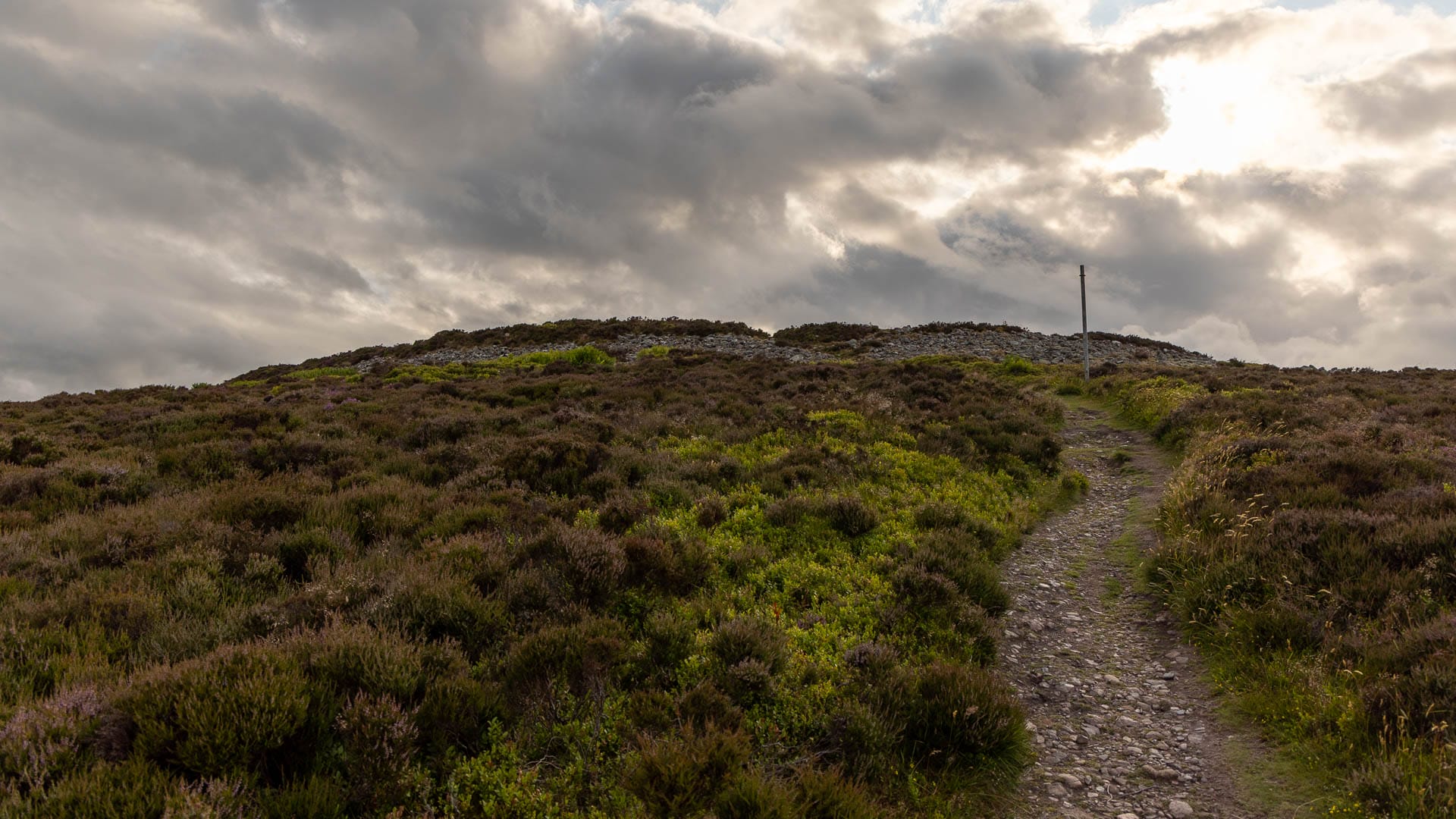
At the top, visitors pass through one of the entrances and enter the huge courtyard. The oval inner area stretches for around 150 metres and is around 50 metres wide. The interior is bordered by boulders at the edges. These are the remains of the former stone walls.
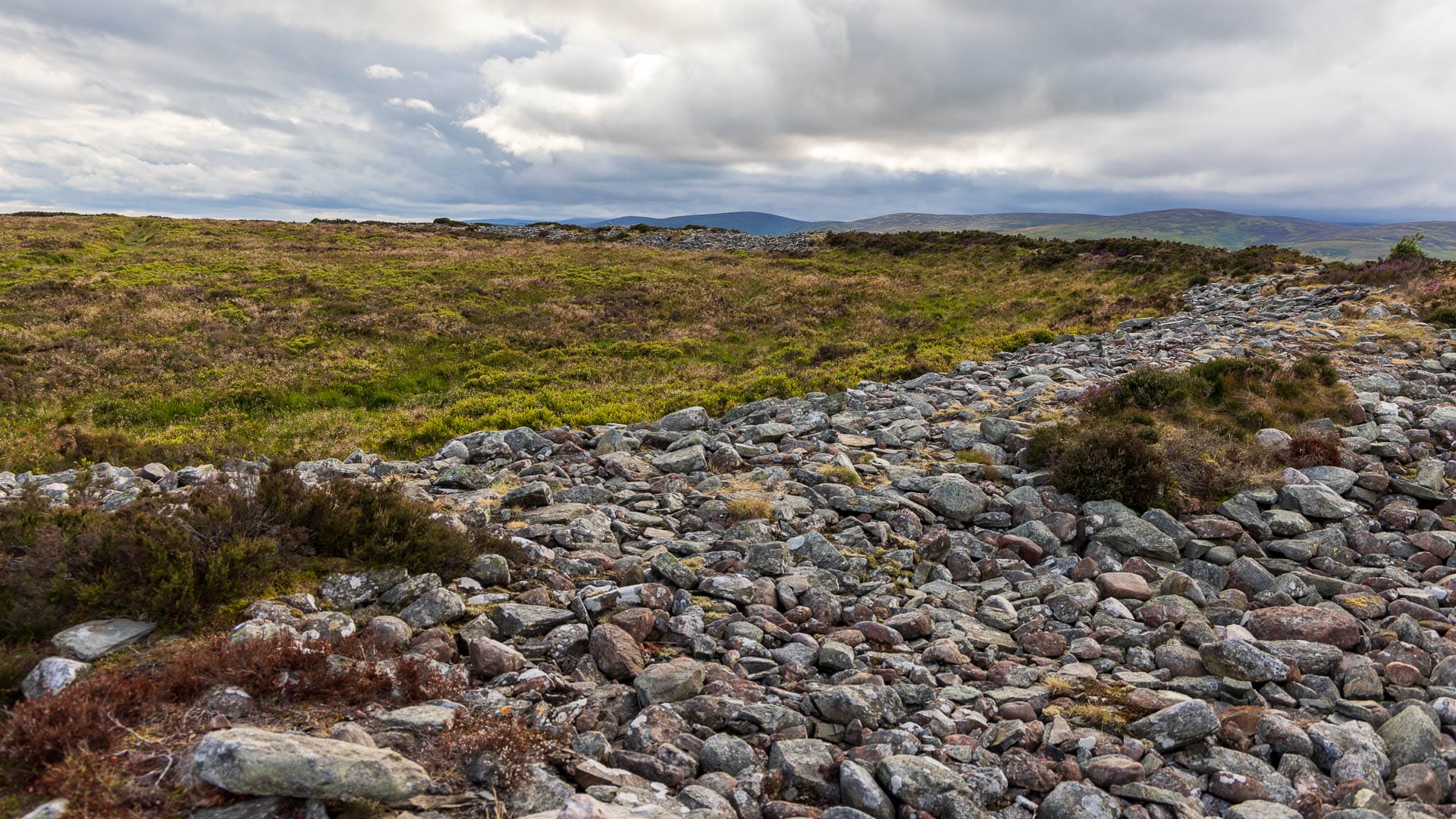
These stone walls were probably the youngest part of the fort. But within these walls there were also two circular enclosures measuring 23 and 37 metres. There was also a cistern, i.e. a water collection point. There were probably also other roundhouses here.
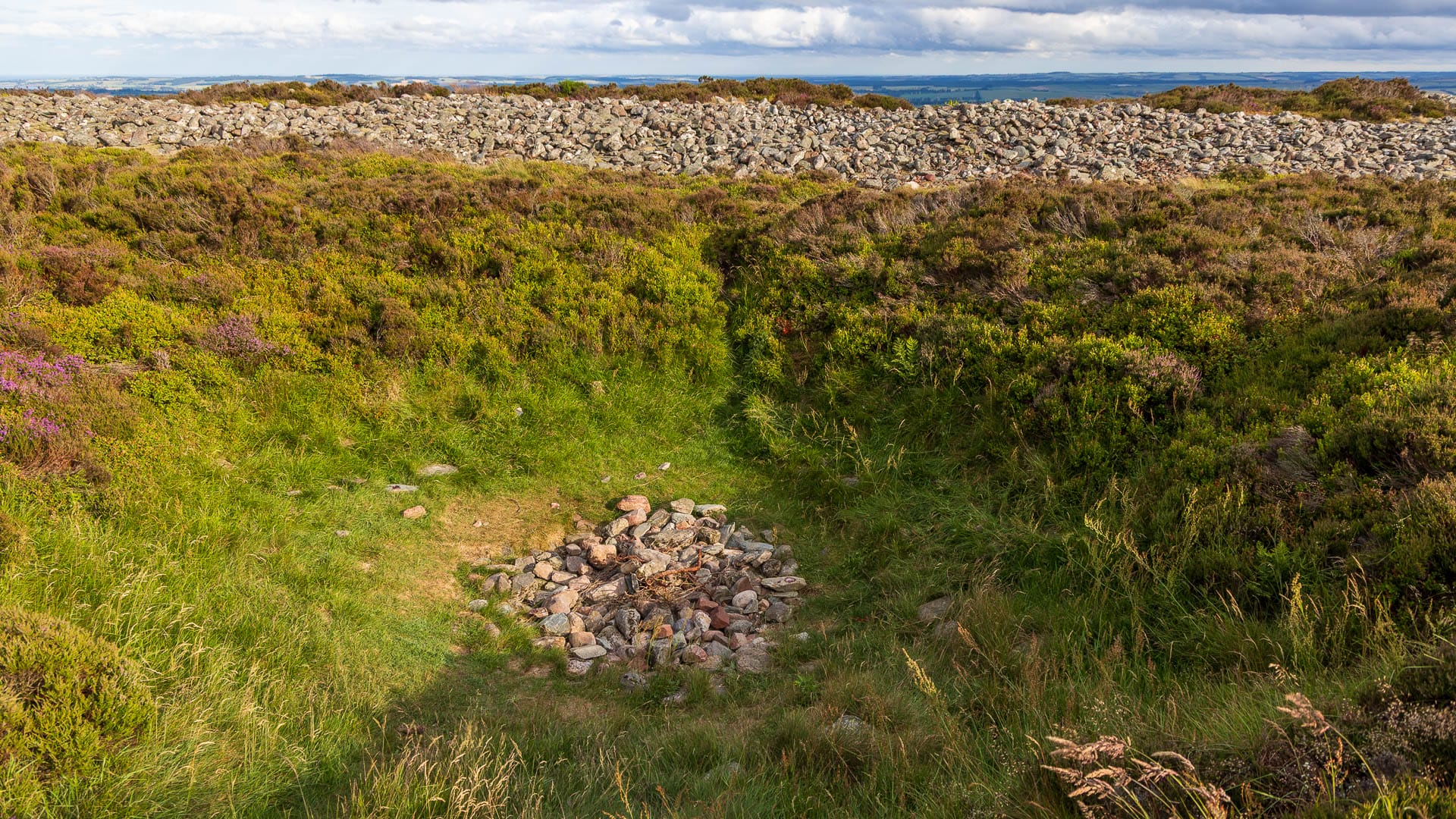
From the White Caterthun, visitors also have a great view of its brown brother. However, the Brown Caterthun had no stone wall, but had several entrances. Nine entrances were counted.
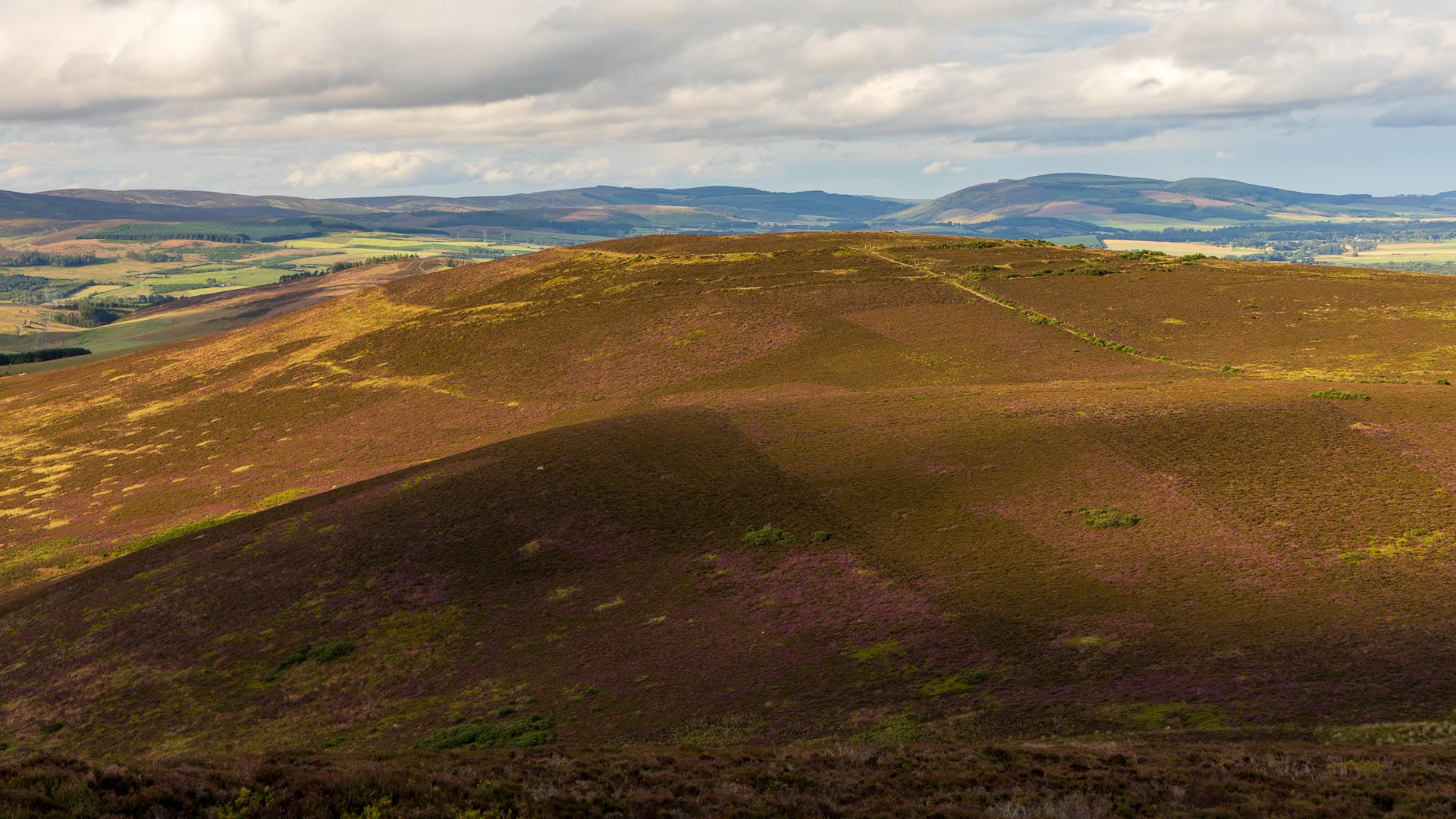
There is another highlight in the White Caterthun. A stone that bears eight “cupmarks”. These are circular indentations made by human hands.
The caterthuns are an impressive site and well worth a visit. At least for the marvellous view.
Knowledge: What the caterthuns were used for
Of course, the thick walls and palisades of the White Caterthun suggest a defensive function. But why were there two fortifications at such a short distance? And why was the Brown Caterthun so permeable, with nine entrances?
In short, scientists unfortunately do not know exactly. Many assume that there was at least one peaceful use, perhaps as a place of worship. In any case, both were frequently remodelled and extended. And the two hillforts were probably regarded as a single complex.
Directions
With satnav: “DD9 7QR” will take you to the Caterthuns.
Without satnav: From the High Street B966 in Edzell, turn off towards Menmuir onto Dunlappie Road. After the village of Dunlappie, the road comes to a T-junction. Turn right here towards Menmuir. The road immediately turns left again and there are already signs for the Caterthuns.
A little further on, the road turns right up an incline. Here too, signs point the way to the Caterthuns. At the top of the hill there is a car park with signs. Park here and go through the wooden gate.
The narrow, stony path should be walked in sturdy shoes. Up, once through the interior and back again is about 1.5 kilometres.
You are currently viewing a placeholder content from Google Maps. To access the actual content, click the button below. Please note that doing so will share data with third-party providers.
More Information